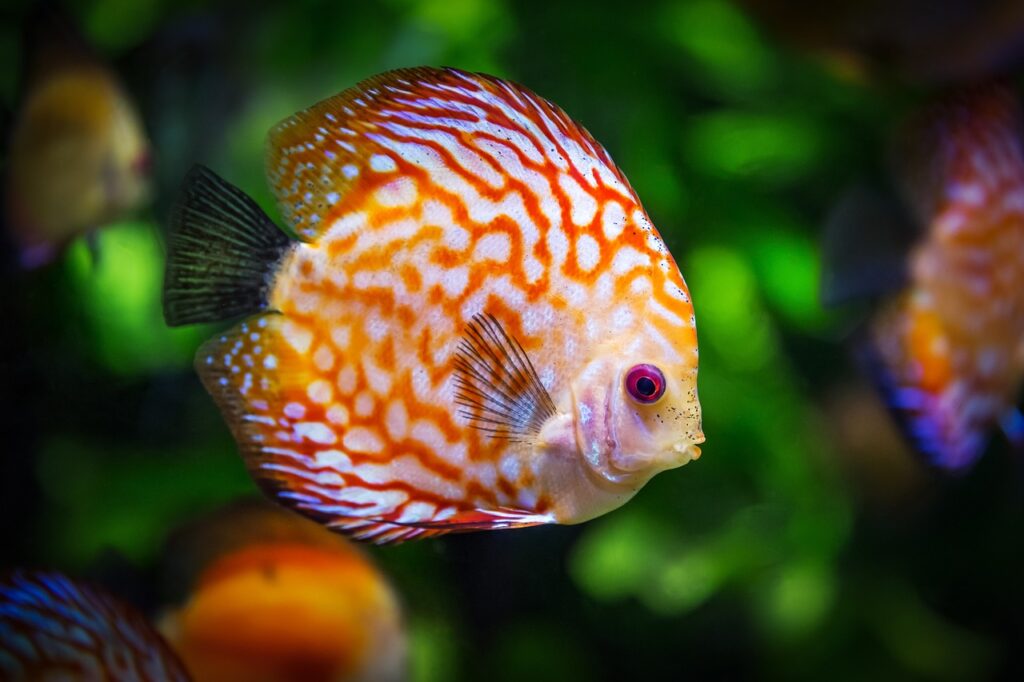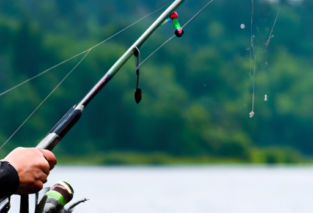Imagine yourself entering the mesmerizing underwater world, surrounded by an array of colorful and diverse fish. Have you ever wondered about the variety of scales that adorn these magnificent creatures? Look no further, for “An Introduction to Different Types of Fish Scales” is here to unravel the mysteries of these fascinating features. This comprehensive guide takes you on a journey through the many types of scales found in fish, revealing their unique characteristics and functions. Join us as we explore the intricate patterns, textures, and adaptations of fish scales that have captured the fascination of marine enthusiasts for years.

Fish Scales Overview
Fish scales are fascinating structures that play a crucial role in the lives of our aquatic friends. They serve as protective coverings, providing defense against predators and environmental factors. The remarkable diversity of fish scales is a testament to the incredible adaptation of these creatures to their habitats.
In this article, we will dive into the various types of fish scales, exploring their structure, function, and examples. Understanding the different types of scales will not only deepen our appreciation for the incredible diversity of fish, but also shed light on their evolutionary history.

Types of Fish Scales
Placoid Scales
Placoid scales, also known as dermal denticles, are commonly found in elasmobranchs like sharks and rays. These scales are unique, resembling tiny teeth embedded in the skin. Their structure consists of a dentin-like core surrounded by enamel-like material. This design gives sharks their rough, sandpaper-like skin.
The primary function of placoid scales is to reduce drag in water, allowing sharks to swim more efficiently. The rough texture created by these scales disrupts the flow of water, decreasing turbulence and increasing speed. Additionally, placoid scales provide protection against injuries and abrasions.
Sharks, with their extraordinary diversity, showcase a wide range of placoid scale variations. For instance, species like the Great White Shark have large, symmetrical scales, whereas the Thresher Shark possesses elongated scales on its tail for agility.
Cosmoid Scales
Cosmoid scales are ancient scales found in ancient fish called sarcopterygians. Today, these scales are only present in the lungfishes and the coelacanths, which are living fossils. These unique scales consist of a bony inner layer, known as cosmine, and an outer layer made of enamel.
Cosmoid scales are incredibly strong and dense, providing excellent protection against potential threats. They also serve as an attachment point for muscles, enabling powerful movements. These scales are so sturdy that fossils of ancient fish with cosmoid scales have been found, preserving their intricate details.
The lungfish is a notable example of a fish with cosmoid scales. These scales can withstand the harsh conditions of stagnant swamps and provide the lungfish with armor-like protection.
Ganoid Scales
Ganoid scales are another type of ancient scale found in certain fish species like gar and sturgeon. These scales have a diamond shape and are composed of a bony plate covered by a layer of enamel-like material. This enamel gives the scales a glossy appearance, making them visually appealing.
The structure of ganoid scales affords excellent protection to the fish. Their overlapping arrangement creates an armor-like covering that shields the fish from potential predators. Additionally, the glossy surface reduces drag in water, allowing for more agile movements.
The gar, with its long, slender body, showcases the remarkable features of ganoid scales. These scales provide the gar with both the strength and flexibility needed to navigate its environment efficiently.
Ctenoid Scales
Ctenoid scales are the most common type of scales found in most bony fish species. These scales have a rounded shape with tiny comb-like projections along their edges. These projections, known as ctenii, give ctenoid scales their characteristic rough texture.
The primary function of ctenoid scales is protection, just like other types of fish scales. The comb-like projections increase the scale’s surface area, enhancing its effectiveness in defense against predators. Ctenoid scales are also flexible, allowing for unhindered movement.
Ctenoid scales can be found in a wide variety of fish, from small freshwater species like guppies to large oceanic species like tuna. Their prevalence in bony fish is a testament to their effectiveness and versatility.
Cycloid Scales
Cycloid scales are similar to ctenoid scales, with a rounded shape, but lack the comb-like projections. These scales have a smooth, oval or circular appearance. Cycloid scales overlap one another, creating a flexible and streamlined covering.
The primary function of cycloid scales is protection and reducing drag. The smooth surface of these scales enables fish to glide through the water with minimal resistance. Additionally, the flexibility of cycloid scales allows for efficient movement and maneuverability.
Cycloid scales can be found in various fish species, including trout and carp. Their simple yet effective design is a testament to nature’s adaptability in different aquatic environments.
Cycloid vs. Ctenoid Scales
Cycloid and ctenoid scales share many similarities in function, but their structures have distinct differences. The primary difference lies in their outer surface texture. While ctenoid scales have comb-like projections, cycloid scales have a smooth texture.
The comb-like projections of ctenoid scales provide additional protection and increase scale surface area. Cycloid scales, on the other hand, offer reduced drag due to their smooth surface. Depending on the fish species and their specific needs, either type of scale can provide the necessary advantages.

Other Types of Fish Scales
Apart from the previously mentioned scales, there are a few other noteworthy types found in certain fish species.
Placoid-like Scales
Some fish, like the catfish, possess scales that are reminiscent of placoid scales. These scales have a spine-like projection that gives them a rough texture. While they differ from true placoid scales in structure, their function remains similar – providing protection and reducing drag.
Elasmoid Scales
Elasmoid scales, also known as typical scales, are found in most bony fish species. They are thin, flexible, and overlapping in nature. These scales are constantly growing, and as the fish grows, new scales are added, ensuring continuous protection.
Elasmoid scales provide protection against predators and abrasions, as well as maintaining the fish’s internal water balance. They are highly efficient in reducing drag, allowing fish to swim swiftly through their aquatic habitats.

Conclusion
Fish scales are incredible structures that showcase the diversity and adaptability of aquatic life. From the rough and tooth-like placoid scales of sharks to the flexible and overlapping elasmoid scales of bony fish, each type of scale serves a specific purpose.
By understanding the various types of fish scales and their functions, we gain a deeper appreciation for the fascinating world of fish. These scales not only provide crucial protection and reduce drag, but also contribute to the overall beauty and efficiency of these remarkable creatures. So, next time you encounter a fish, take a moment to admire its scales and marvel at the wonders of nature’s design.






